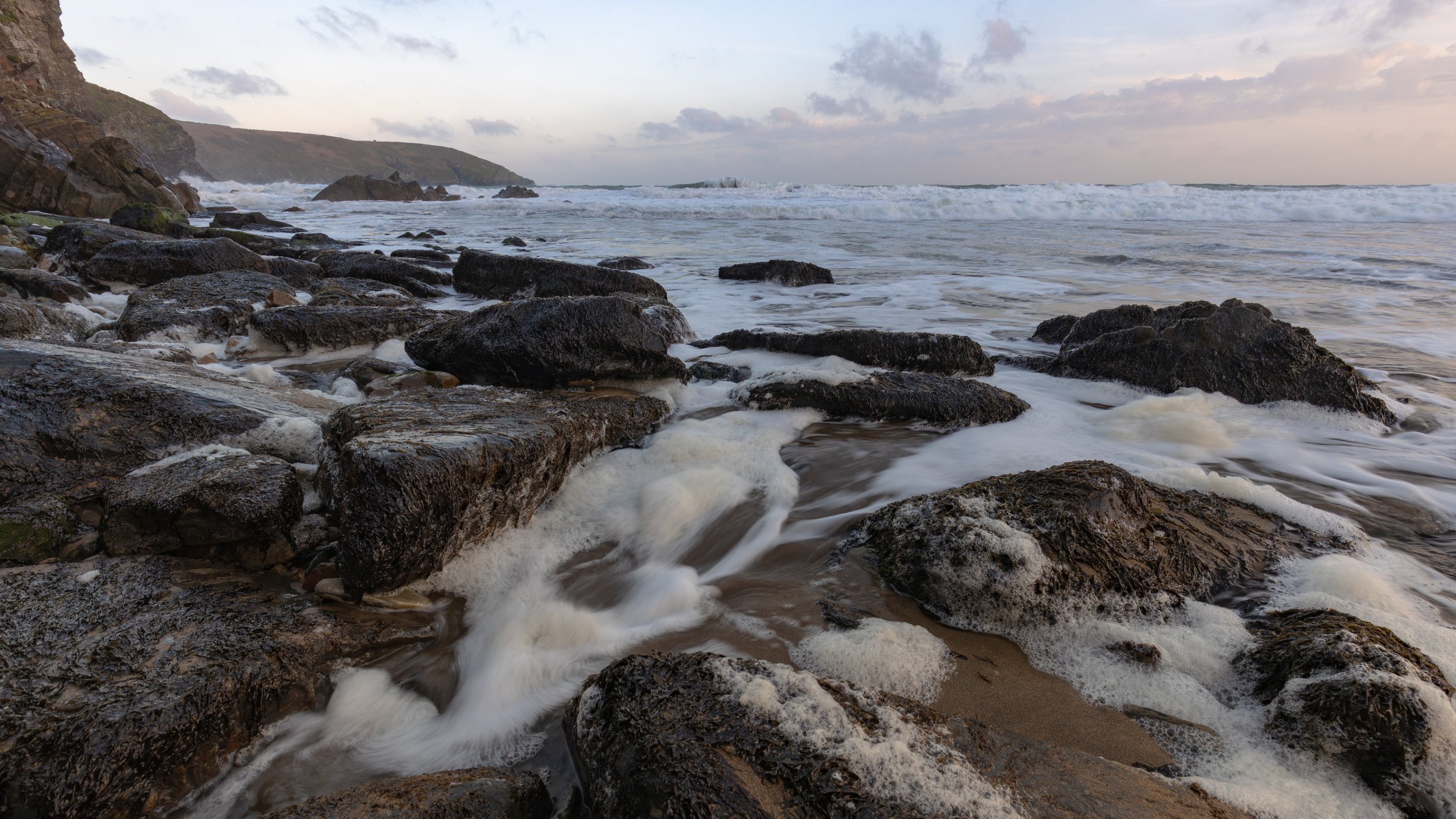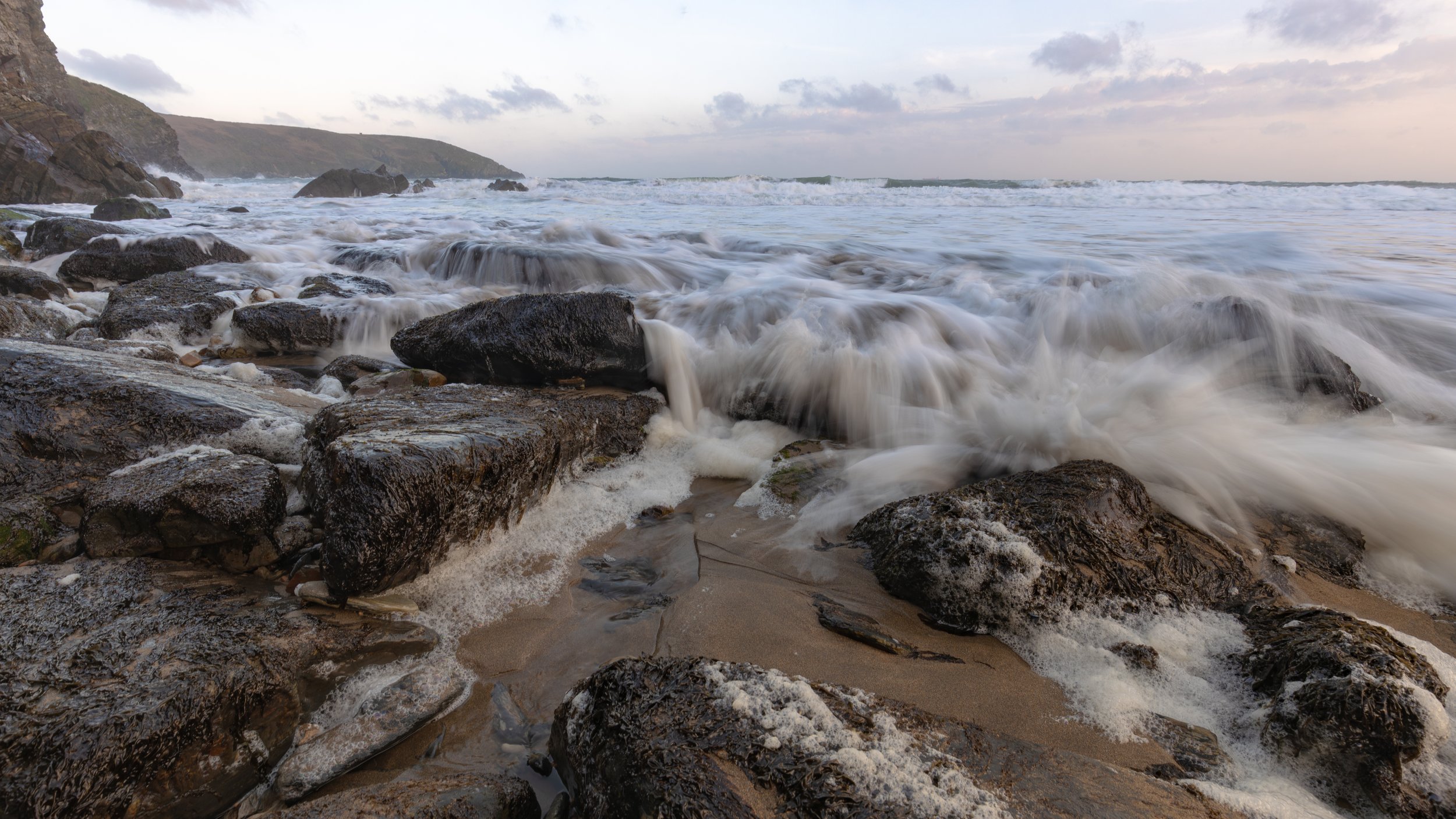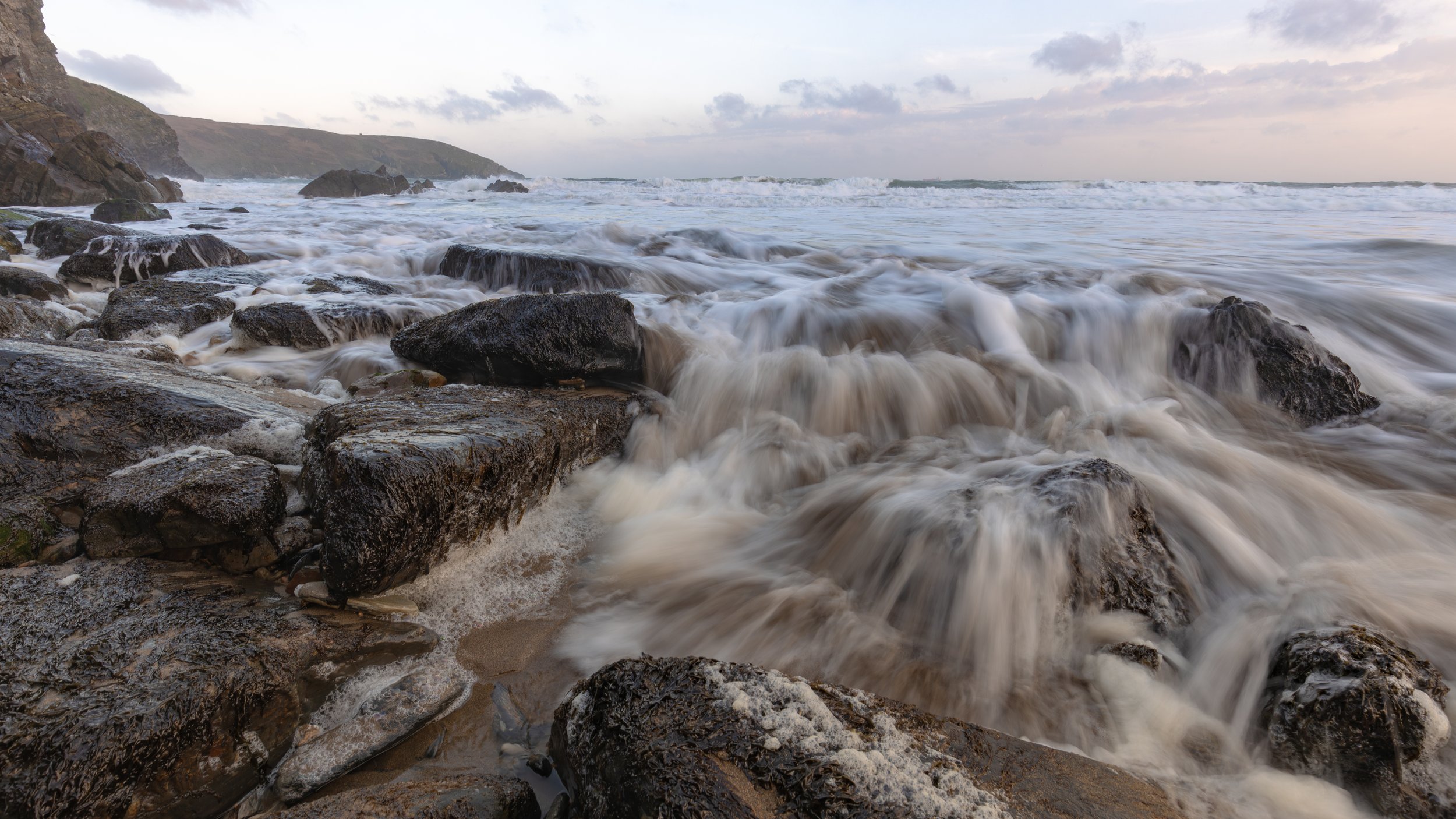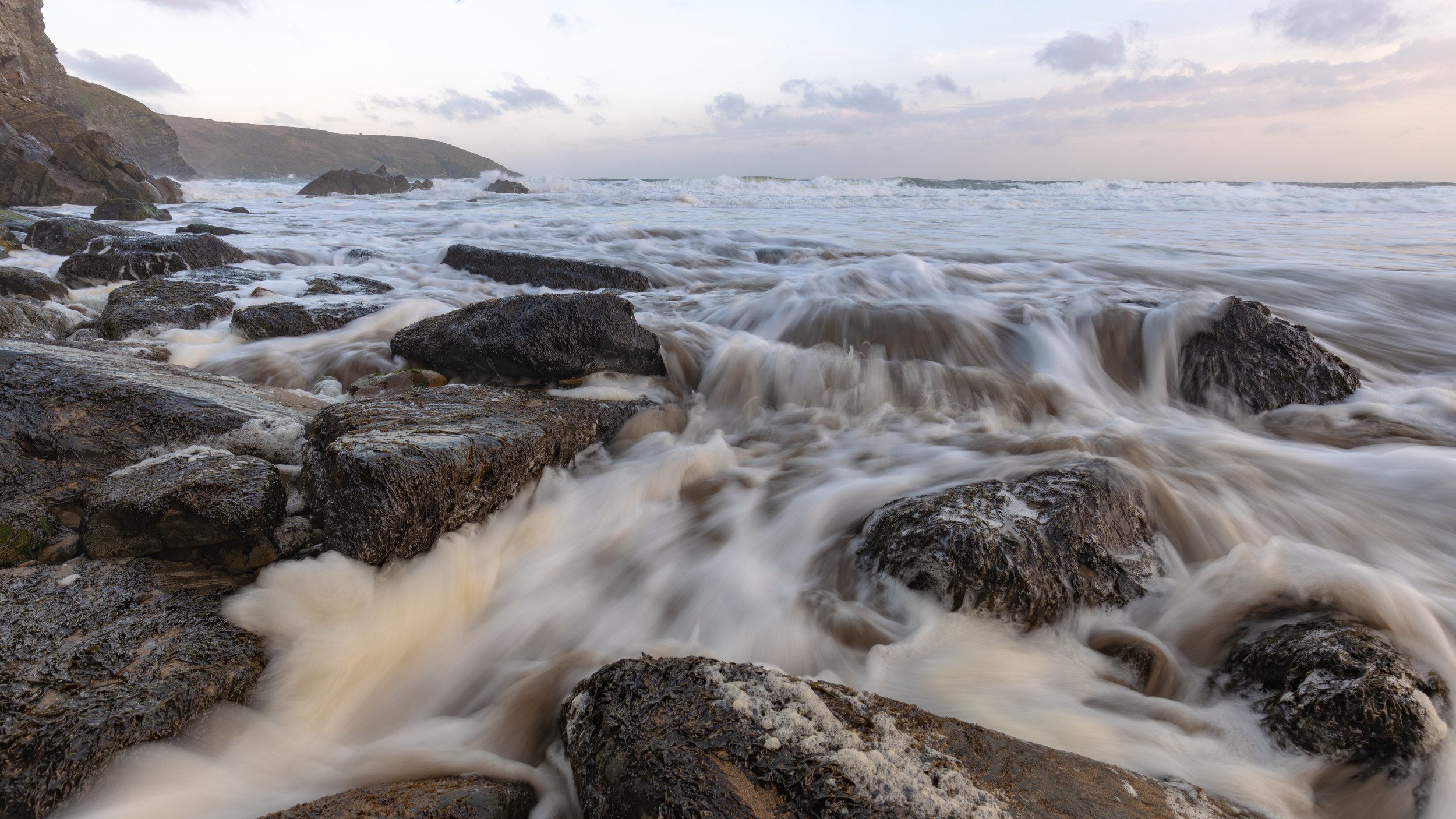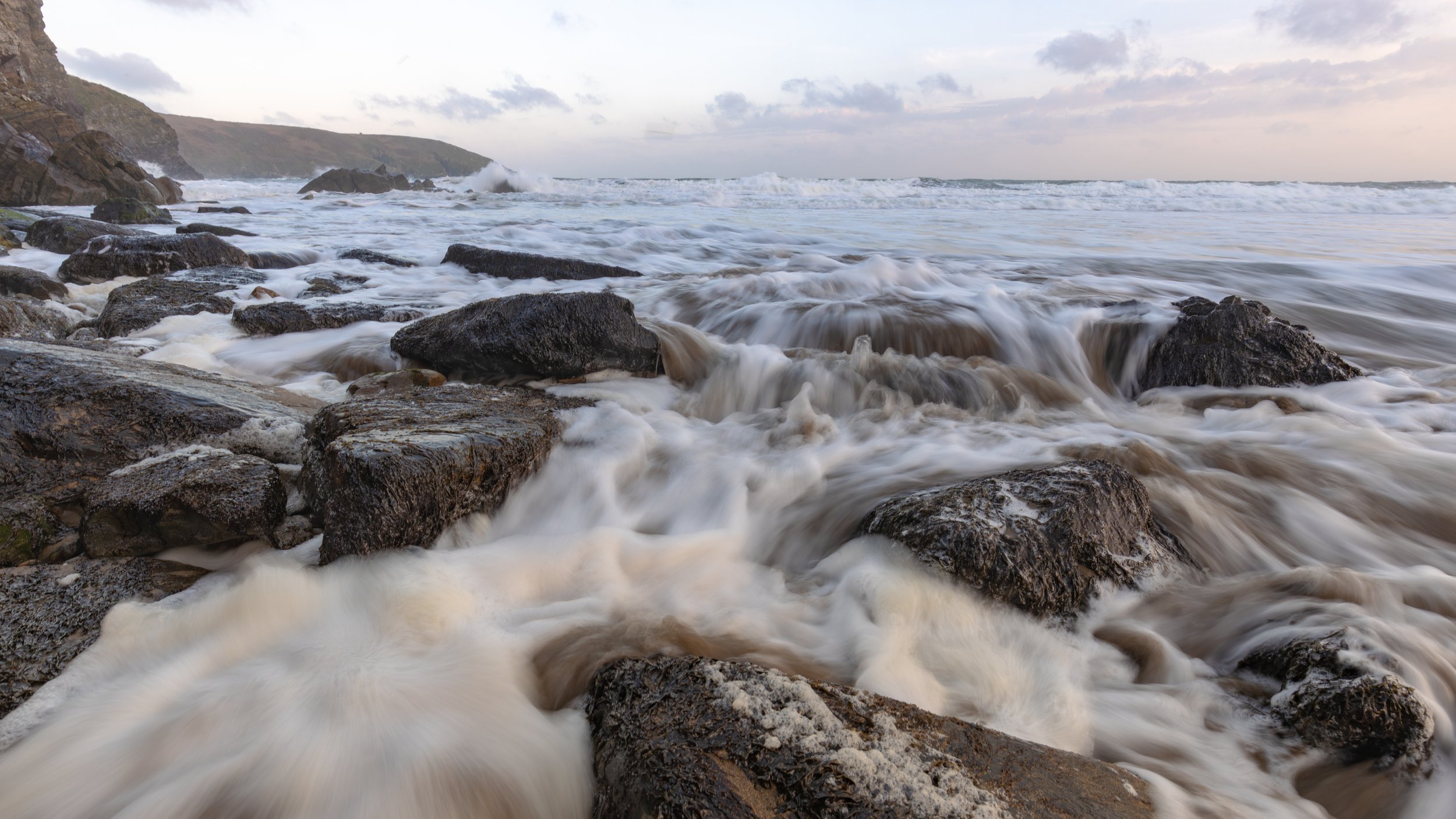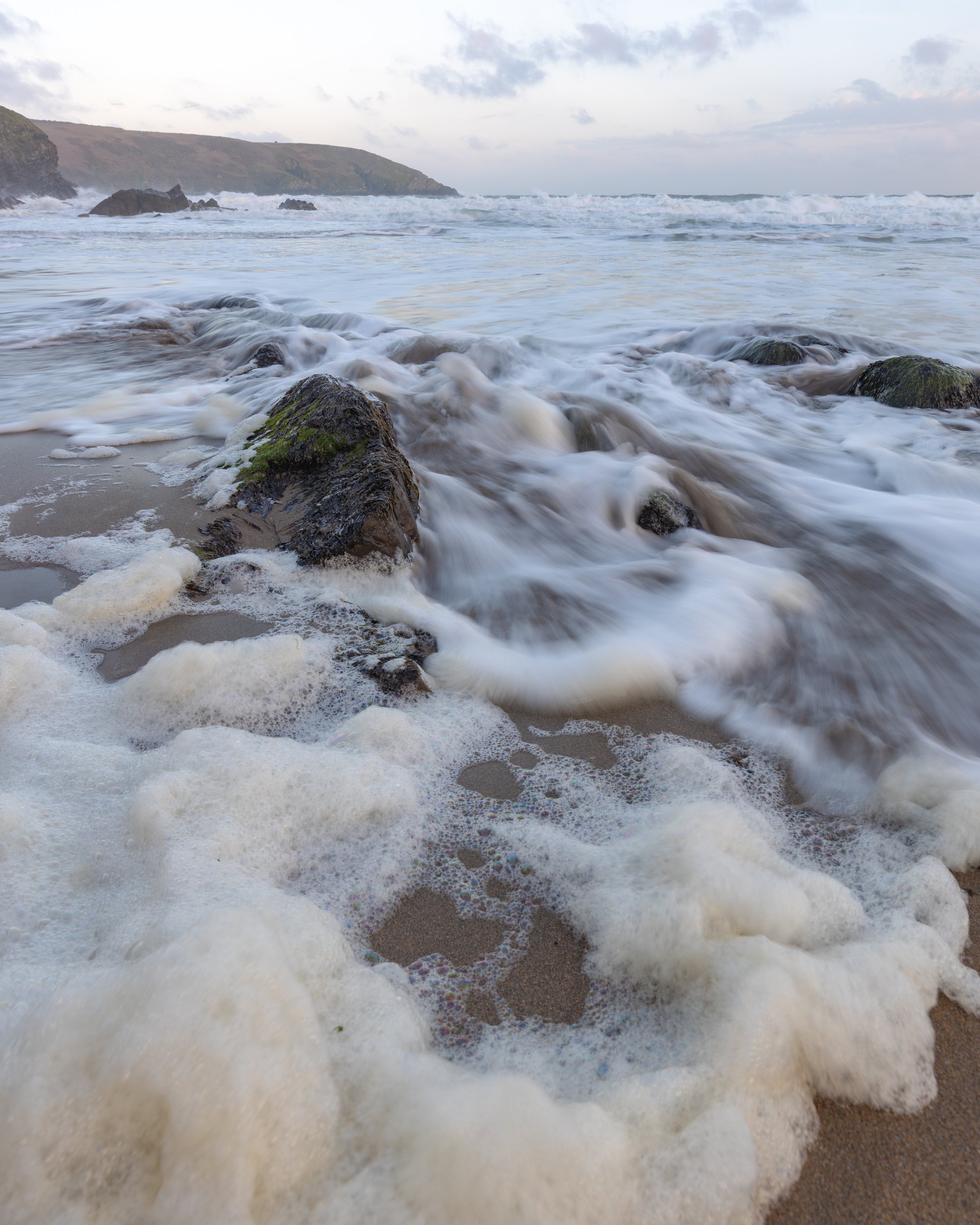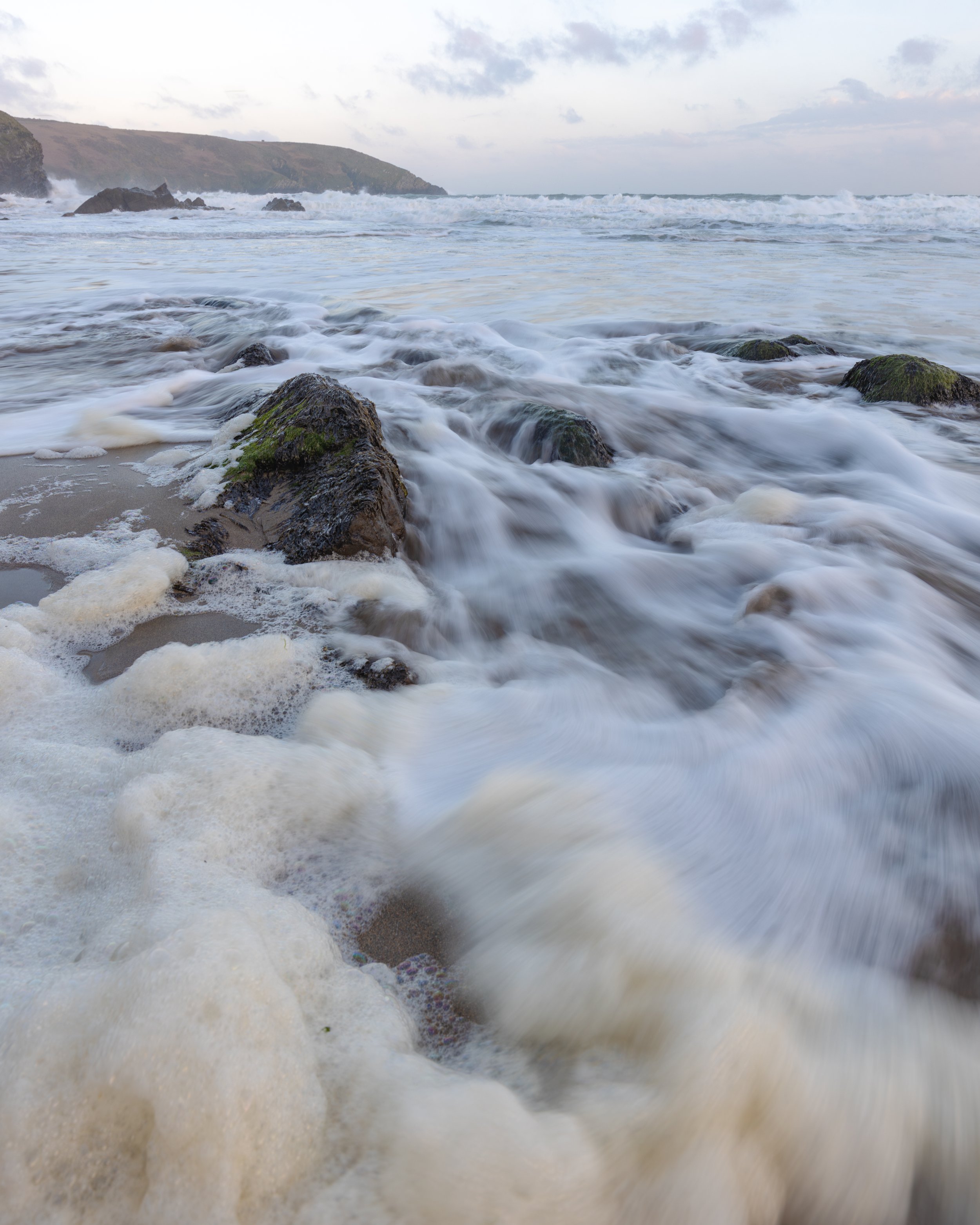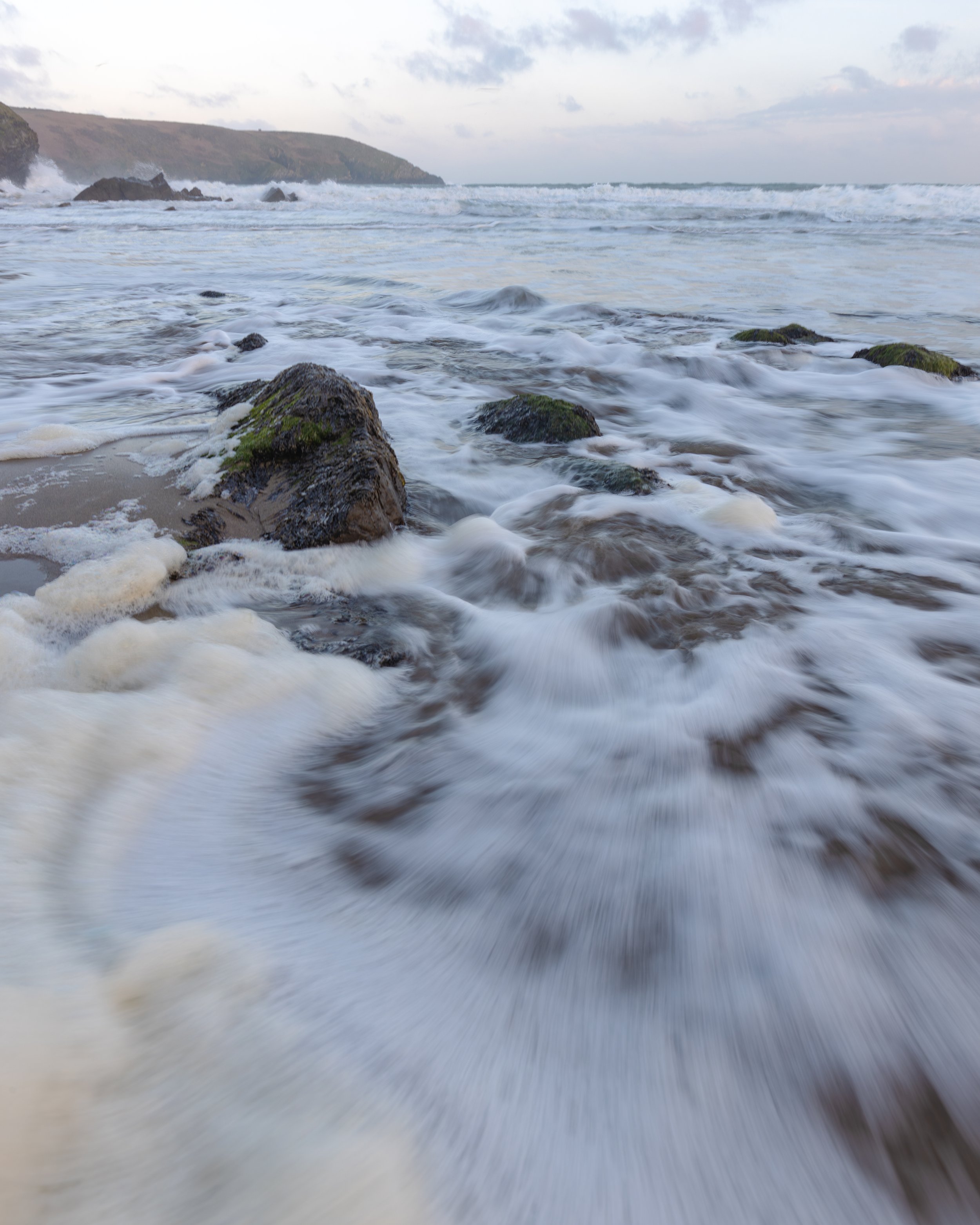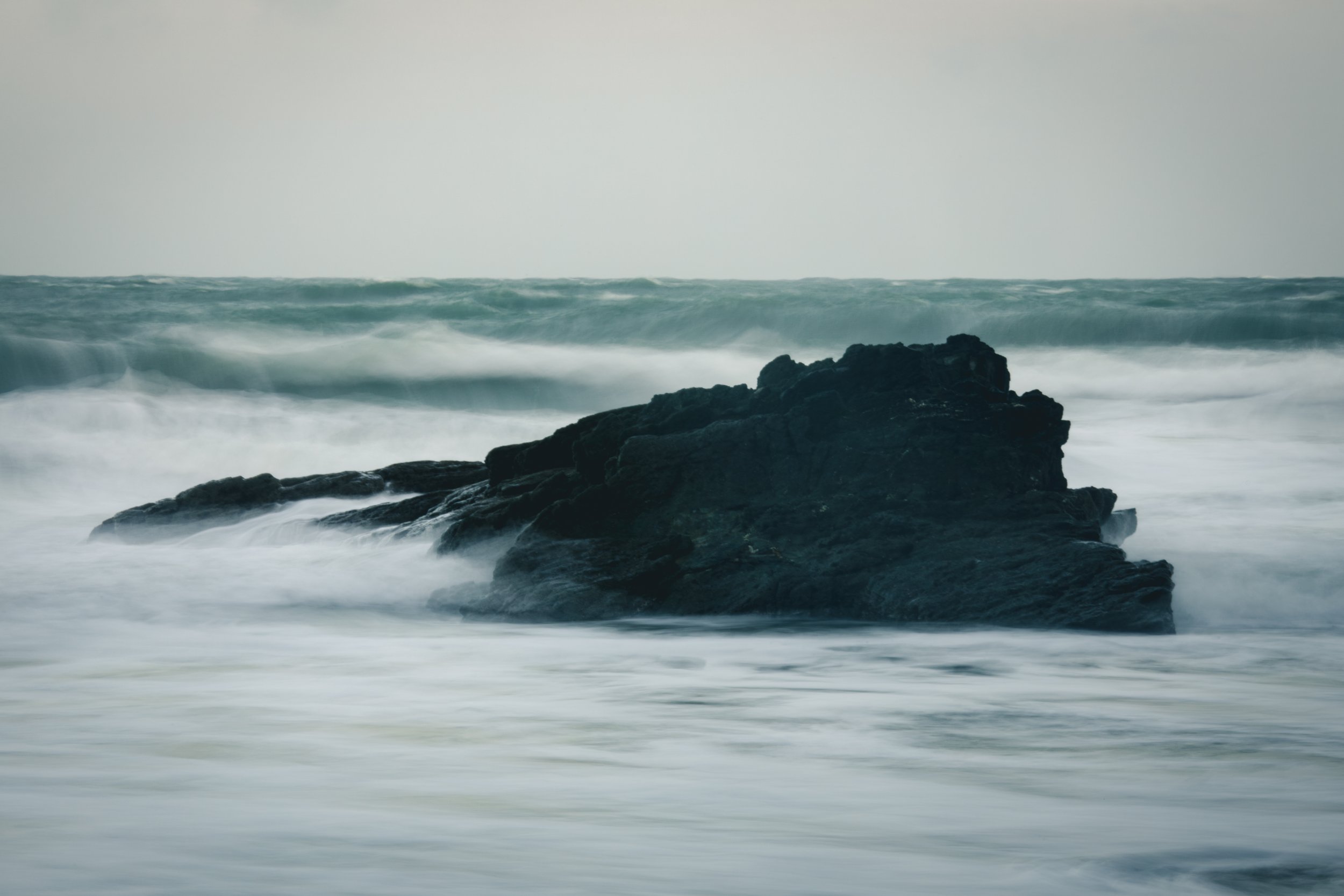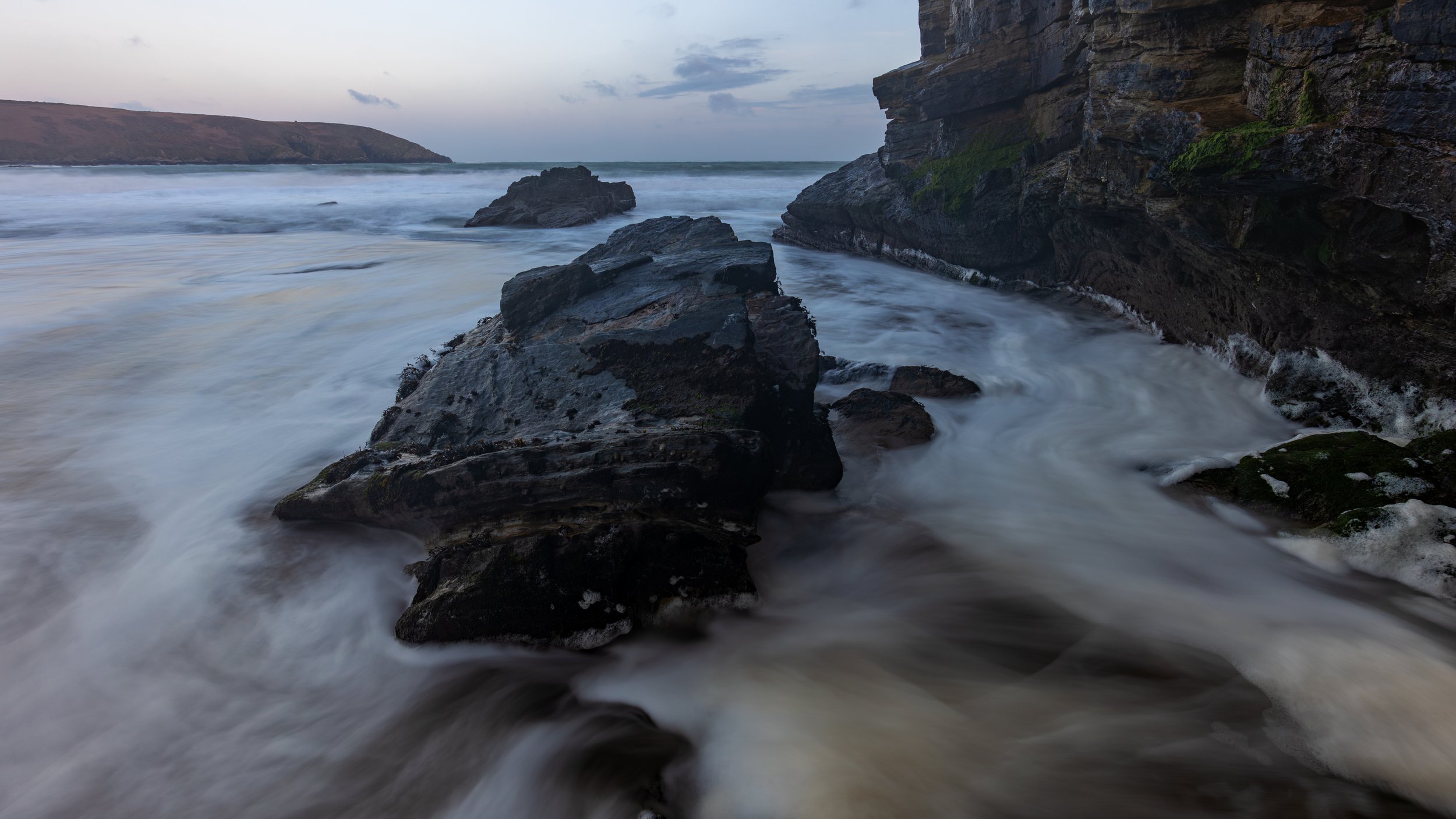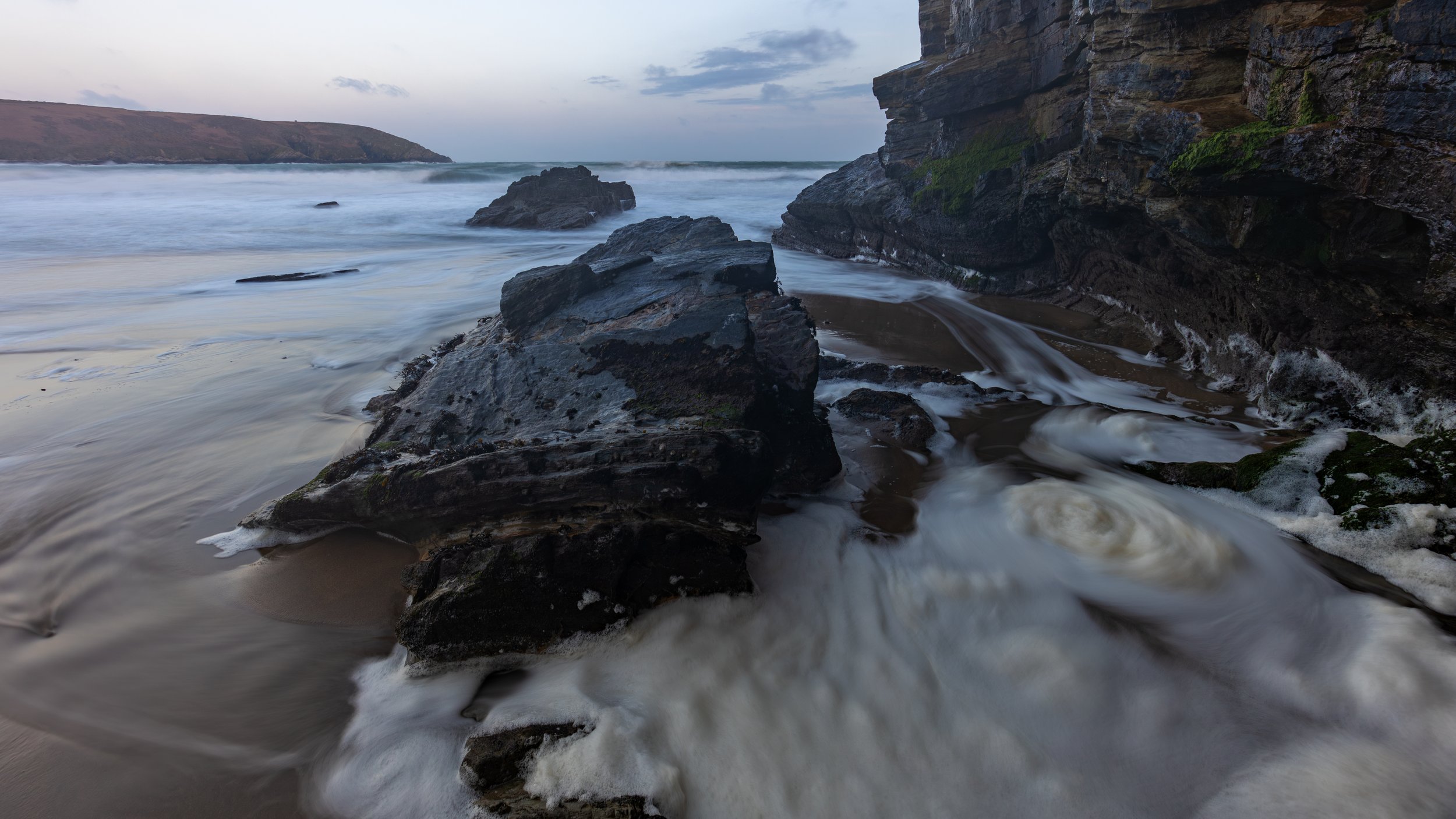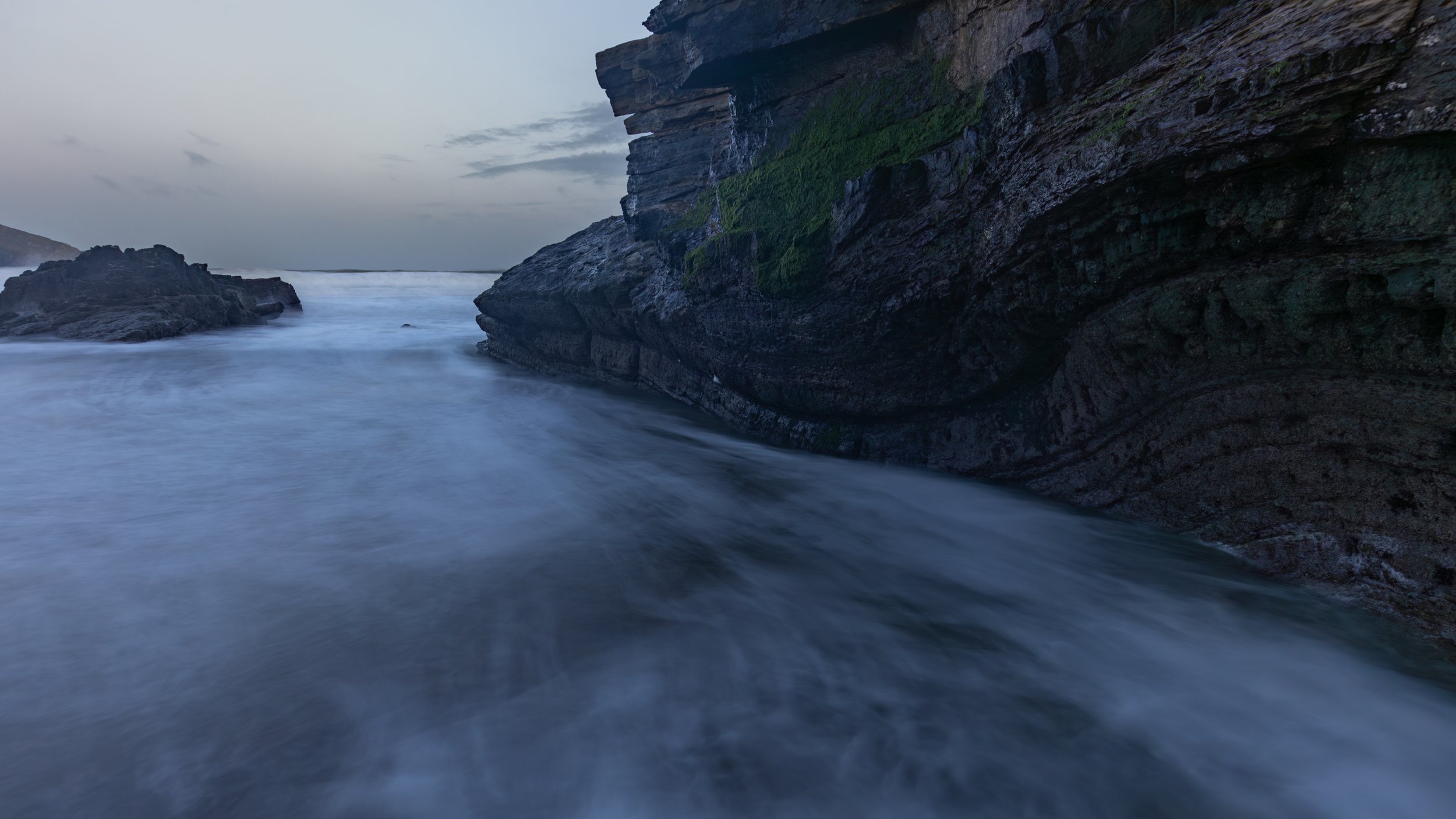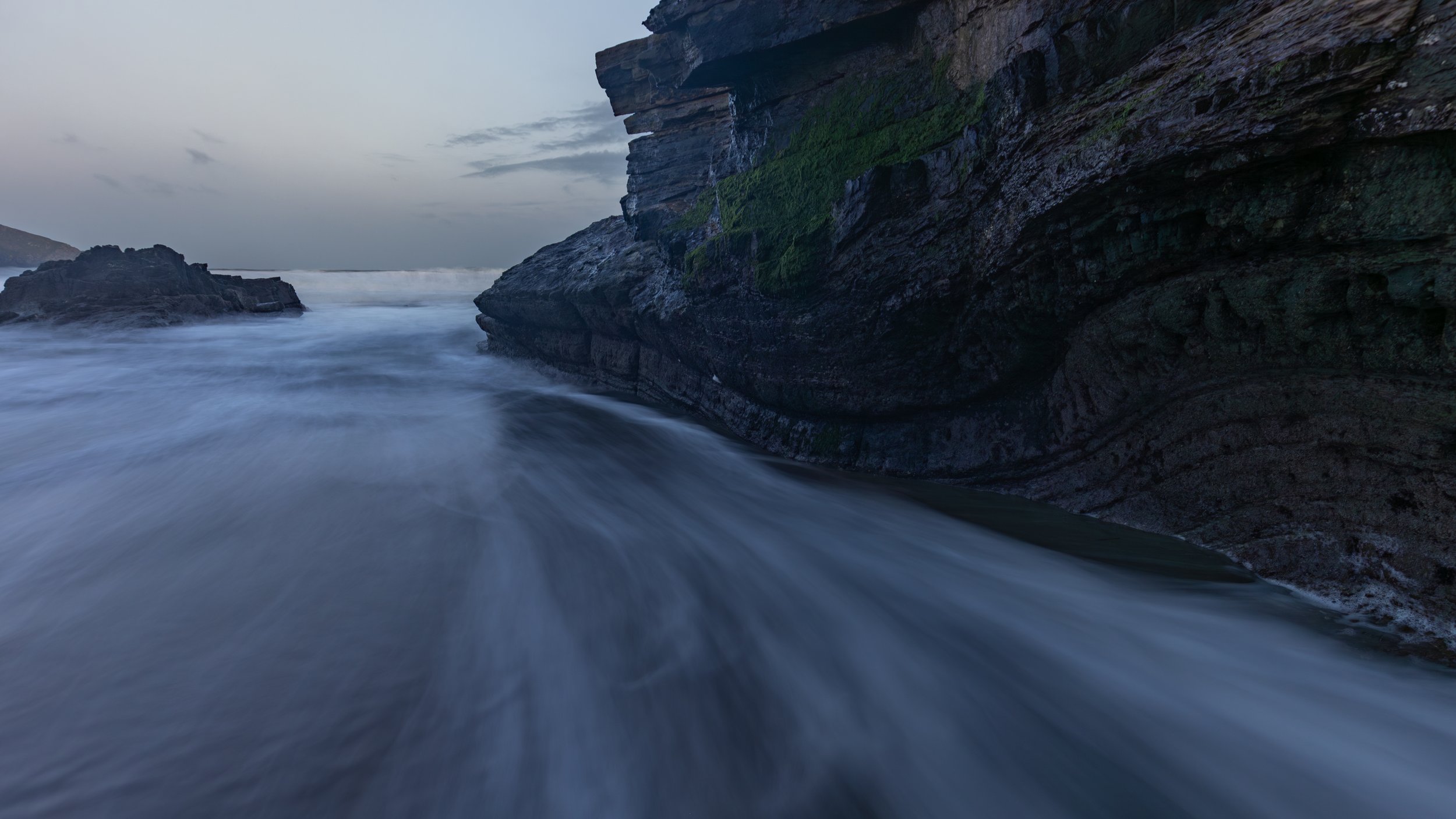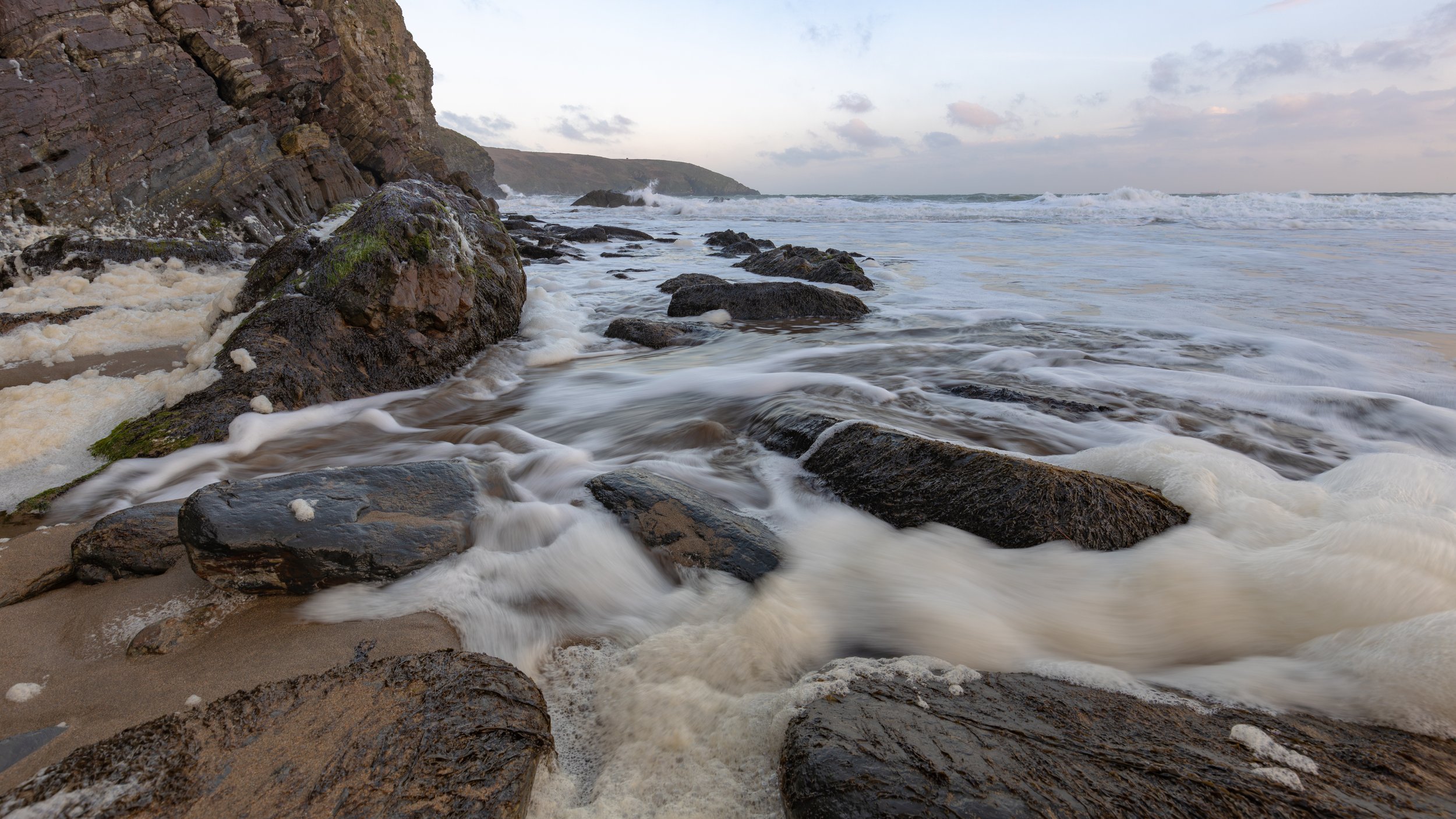Foam Party: My Experience with Tides in Seascape Photography
Embarking on a photography adventure to Rocky Bay in Cork, I had one goal in mind: to capture the beauty of the sea meeting the shore at sunset. This mission was driven by my desire to seize the right moment where nature's elements come together, creating an ideal canvas against the ocean backdrop. Little did I know, that this journey would evolve into a lesson on the intricate relationship between tides, the ocean elements and photography, hence the apt title, "Foam Party."
As the sun descended in the sky, casting a warm glow over the rugged coastline, I found myself immersed in a landscape transformed by natural forces. Earlier in the afternoon, just before high tide, a brief visit to the beach unveiled an interesting sight: a blanket of seafoam covering the shore, evidence of a recent storm's impact on the coast. It was a mixture of elements that I felt I just had to photograph, so I was ready to explore the treasures revealed by the changing tides.
With each click of the shutter, I hoped to capture the essence of this fleeting moment, the dance between light and shadow, water and rock and now of course sea foam. The sea foam, added an otherworldly quality to the scene, transforming the ordinary into the extraordinary.
As the sun descended towards the horizon, painting the sky in warm hues, I continued to explore the shoreline, seeking out new perspectives and compositions. Despite the subdued lighting, the landscape before me was brimming with potential compositions, each one more interesting than the last.
It was then that the true lesson of the day became apparent: the importance of understanding and respecting the tide’s rhythms, particularly in seascape photography. The tide, with its ever-changing ebb and flow, emerged as an ally, offering endless possibilities for shots as it retreated and revealed more of the rocky shore to point my camera at.
By closely monitoring the tides, I was able to anticipate the shifting landscape, adapting my approach accordingly. What initially appeared as a simple beach transformed as the waters receded, revealing hidden treasures waiting to be discovered.
As the final rays of sunlight vanished below the horizon, signalling the end of another shoot, I reflected on the invaluable lessons learned at Rocky Bay. In landscape photography, adaptability is paramount, and beauty can be found in the most unexpected places. On this occasion, if I had arrived at the wrong time then I wouldn’t have gotten the shots I got, plus I may have ended up with nothing if I came at high tide. Always keep an eye on the tides before you go shooting and match the tide to the location where possible as this gives you the best chance to showcase it in its best light as such.
So, the next time you embark on a seascape photography expedition, remember to keep a close eye on the tides. For within the ebb and flow of the sea lies the key to unlocking your next banger shots
Tips for Seascape Photography:
Research Tide Times: Before heading out for a seascape shoot, check the tide times for the area. Understanding when the tide is high or low can help plan the shoot effectively.
Scout the Location: Visit the location beforehand to assess the composition possibilities and any potential hazards. This allows for better preparation when the conditions are optimal for shooting.
Be Mindful of Safety: Keep a safe distance from the water's edge, especially during high tide or rough seas. Pay attention to tide movements to avoid getting stranded or caught off guard by rising waters.
Utilise Filters: Neutral density filters can help achieve long exposure effects, smoothing out the water and enhancing the overall mood of the photograph when you go for long exposures. If you want to keep some detail in the water but not freeze it then a shutter speed of 1/4 second can work well, but be sure to experiment with different speeds to see which works best.
Experiment with Composition: Explore different angles and perspectives to create visually compelling compositions. Incorporate elements such as rocks, cliffs, or structures to add depth and interest to the scene. Then look at what the water is doing as it can be often that missing piece in your images, so wait for the wave to fill the frame.
Monitor Weather Conditions: Weather plays a significant role in seascape photography. Cloud cover, wind, and atmospheric conditions can all influence the mood and lighting of the scene. Keep an eye on weather forecasts and be prepared to adapt to changing conditions.
Practice Patience: Seascape photography requires patience and persistence. Wait for the right moment when the elements align to capture the perfect shot. Don’t be afraid of getting it wrong and also be mindful that even if you get it all right the weather may not play ball as you wished.
By understanding the impact of tides and implementing these tips, you can enhance your seascape photography skills and create stunning images that capture the beauty of the natural world. But most of all check tides and respect them, Always.
Below are the images I captured in this shoot and I’d love for you to come watch the video with me also






